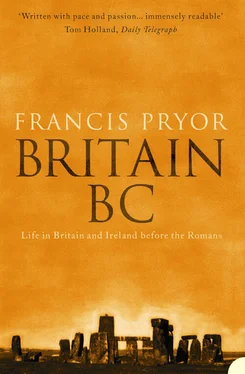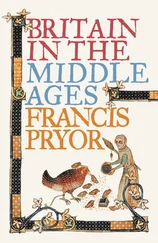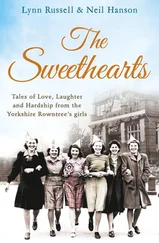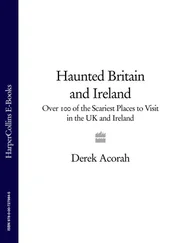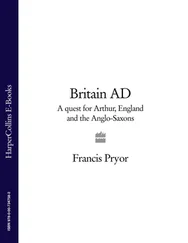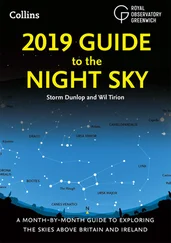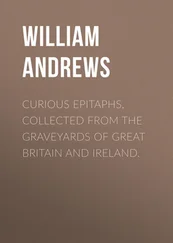Archaeology as an academic discipline is a humanity, and while there are accepted rules for ‘doing’ the subject, it is both impossible and, I believe, undesirable to pretend that archaeologists can provide unbiased and objective truth. We all have our own hobby-horses to bestride, and we might as well ride them in public. So I’ll come clean. My own background is as a field archaeologist – what in the States they refer to as a ‘dirt archaeologist’. It’s a badge I wear with pride, and this book will inevitably reflect that background. Also, for what it’s worth, my views on Creation, religion, ideology and the other related topics I’ll be addressing in this book are essentially pragmatic. I don’t believe in revealed truth, and if I’m forced to seek justification for our existence on this planet, I would turn to Darwin before scripture. He at least provided explanations, even if some of them have been superseded by later findings.
Has its insular peculiarity excluded Britain from other, more important relationships with mainland Europe? In 1972, in his book Britain and the Western Seaways, Professor E.G. Bowen attempted to explain the cultures of western Britain and Ireland in essentially maritime terms. 3 He saw close ties between those regions and neighbouring parts of Europe, especially Brittany, Spain and Portugal. In a masterly reworking of the subject, Facing the Ocean: The Atlantic and its Peoples (2001), Professor Barry Cunliffe has arrived at much the same view, but revised and extensively enlarged. 4 I wouldn’t contest the observations of these two distinguished authors, but I would emphasise the many features that are unique to British and Irish prehistory, ranging from roundhouses and henges to the massive livestock landscapes of the Bronze Age. I would also stress the strong ties that unite east and south-east England to the Low Countries and north-western France; and north-eastern England and eastern Scotland to Scandinavia and the North Sea shores of Germany. I would further suggest that the natural overseas communication routes of at least half of England and Scotland lie to the east, to the North Sea basin and the mainland of north-western Europe. 5
This east-west division of Britain also broadly coincides with the lowland and upland zones (respectively) that the great mid-twentieth-century archaeologist Sir Cyril Fox saw as being fundamental to the development of British landscape and culture – what he referred to as the ‘personality of Britain’. 6 I tend towards a less closely defined view of these zones. I do not see them as inward-looking or self-referential. Quite the opposite, in fact. To me, the Atlantic/North Sea contrast is just that: it’s a cultural contrast, not a divide, and is one of the key characteristics of the British Isles. It’s a long-term stimulus that has fired the social boilers of Britain and helped ward off complacency.
Before I start in earnest, I’d like to express the hope that by the end of this book you will be as convinced as I am that their pre-Roman cultures have made a distinct contribution to the various national identities of the people of the British Isles. I hope you will also agree that the Ancient Britons have lurked in the twilight zone of history for far too long.
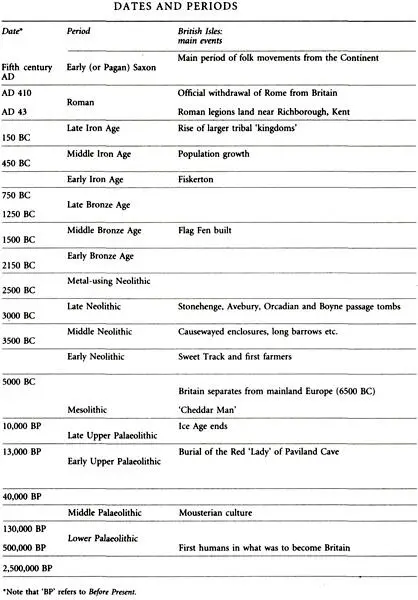
PART I Another Country
CHAPTER ONE In the Beginning
OUR STORY WILL BE about people and time. Human prehistory is such a vast topic that it has proved necessary to divide it up into a series of shorter, more manageable periods. Their origins lie in the birth and development of archaeology itself.
It was a museum curator, C.J. Thomsen, who proposed the Three-Age System of Stone, Bronze and Iron when faced with the challenge of making the first catalogue of the prehistoric collections of the Danish National Museum of Antiquities in Copenhagen. He based his scheme on the relative technological difficulty of fashioning stone, bronze and iron. Iron, of course, requires far greater heat – and controlled heat at that – to smelt and to work than does copper, the principal constituent (with tin) of bronze. Thomsen’s book, A Guide to Northern Antiquities, was published in 1836, with an English translation in 1848. Eleven years later (1859) Charles Darwin published On the Origin of Species; by then Thomsen’s scheme had gained wide acceptance.
Although still a young subject, prehistory played an important role in the widespread acceptance of Darwin’s ideas. 1 Perhaps that’s why most English prehistorians, myself included, tend to approach our subject from an evolutionary perspective. We probably shouldn’t think in this way, but most of us are products of an education system that places great emphasis on structure, pattern and analytical discipline. Darwin’s views on evolution sit very happily within such a rigorous yet down-to-earth conceptual framework.
In the early and mid-nineteenth century archaeologists in both Britain and France were caught up in the great debate around Noah’s Flood. Working on material found in the gravels of the river Somme, the great French archaeologist Boucher de Perthes published evidence in 1841 that linked stone tools with the bones of extinct animals. He argued that these remains had to predate the biblical Flood by a very long time. It was revolutionary stuff a full eighteen years before the appearance of On the Origin of Species.
I said that Boucher de Perthes published evidence that linked stone tools with the bones of extinct animals. I should have said he published evidence that associated stone tools with the bones of extinct animals. ‘Associated’ is a very important word to archaeologists. It’s code for more than just a link; it can imply something altogether tighter and more intimate. An example might help.
A few years ago we built our house, and whenever I dig the vegetable garden I find pieces of brick and roof-tile in the topsoil. I also find sherds of Victorian willow-pattern plate and fragments of land-drainage pipe which date to the 1920s. Like most topsoils, that in my vegetable garden is a jumble of material that has accumulated over the past few centuries. In archaeological terms these things are only very loosely associated. However, when work eventually finished on the house, I used a digger to excavate a soakaway for a drain, and filled the hole with all manner of builders’ debris left over from the actual building of the house: bricks, tiles, mortar, bent nails and so on. In archaeological terms, my soakaway is a ‘closed group’, and the items found within it are therefore closely associated. To return to the Somme gravels, Boucher de Perthes was able to prove that the bones and the flint tools were from a closed group. This tight association gave his discoveries enormous importance.
It was not long before gravel deposits elsewhere in Europe, including Britain, were producing heavy flint implements like those found in the Somme. They are known as hand-axes, and are the most characteristic artefacts of the earliest age of mankind, the Palaeolithic or Old Stone Age.
Initially, archaeologists, and many others too, were more interested in what these finds stood for – evidence for the true antiquity of mankind – than in the finds themselves. Alliances were formed with pioneering geologists such as Sir Charles Lyell, whose book Principles of Geology, published in 1833, had established the fundamentally important ‘doctrine of uniformity’. This sounds daunting, but isn’t. It’s a grand-sounding way of saying that the natural processes of geology were the same in the past as they are today. So, even ten million years ago rivers wore away at their banks, glaciers scoured out their valleys and every so often volcanoes erupted, covering the countryside around with thick layers of ash and pumice, just as they do today. Put another way, after Lyell nobody could argue that, for example, the highest mountains on earth were covered by the waters of a vast flood just because that accorded with their beliefs.
Читать дальше
